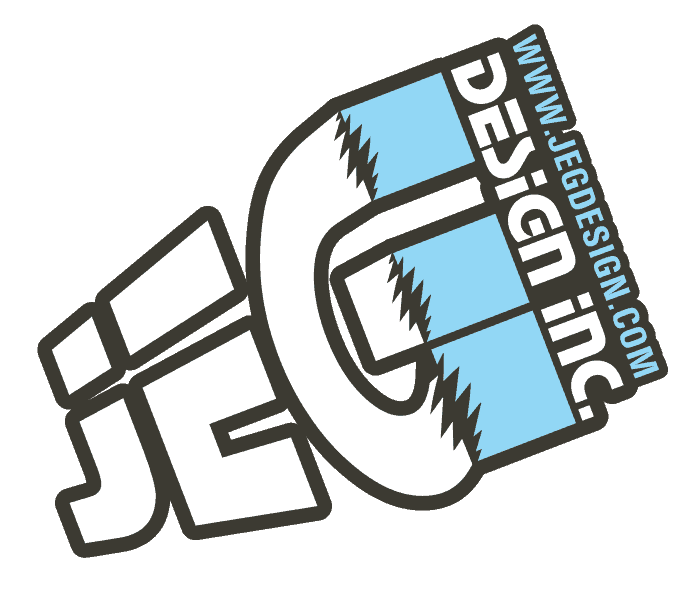As we head deeper into the digital decade, 2025 is shaping up to be a turning point in how businesses build, manage, and scale their online presence. With consumers demanding faster, smarter, and more personalized experiences, businesses can no longer rely on outdated website strategies. Technologies like AI in web development and headless CMS trends in 2025 are not just buzzwords, they’re shaping the future of business websites.
In this blog, JEG DESIGN INC explores the major website design trends of 2025, the rise of AI integration, and why the best CMS for SEO in 2025 might look very different from what you’re using now.
AI in Web Development: Smarter Sites for Smarter Users
Artificial Intelligence is no longer a futuristic concept it’s here, and it’s transforming web development in real-time. In 2025, AI in web development is enabling businesses to create highly personalized, adaptive user experiences at scale.
1. How AI Is Changing Website Design:
• Content Personalization: AI can analyze user behavior and tailor content in real-time, improving engagement and conversion.
• Chatbots & Virtual Assistants: Advanced AI-powered bots offer 24/7 support, reducing bounce rates and increasing customer satisfaction.
• SEO Optimization: AI tools now help businesses automatically generate SEO-friendly content, analyze keywords, and improve site structure.
• Design Automation: AI-driven design tools suggest layouts, visuals, and even color schemes based on brand data and user preferences.
Integrating AI isn’t just about tech innovation, it’s about staying competitive. As more businesses adopt AI, websites that don’t evolve risk falling behind.
2. Headless CMS Trends 2025: Flexibility Meets Performance
Traditional CMS platforms like WordPress, though popular, are increasingly being replaced by headless CMS solutions. In 2025, headless CMS trends are all about scalability, performance, and flexibility.
What Is a Headless CMS?
A headless CMS decouples the backend (where content is created) from the frontend (where it’s displayed). This allows developers to use any frontend framework they prefer, while still managing content in one centralized place.
Why Businesses Are Switching:
• Speed and Performance: Headless CMSs are faster because they only deliver the content needed perfect for performance-focused design.
• Omnichannel Content Delivery: Easily deliver content across websites, mobile apps, smart devices, and even IoT.
• Developer Freedom: Build with React, Vue, or any modern framework without CMS limitations.
• Security: Fewer attack surfaces mean stronger protection compared to traditional CMS platforms.
In short, headless CMS architecture is a must-have in any future-facing tech stack. It’s not just a trend, it’s becoming the new normal.
3. Website Design Trends 2025: Speed, Minimalism & Personalization
The website design trends of 2025 focus on more than just aesthetics. They’re rooted in usability, performance, and data-backed decision-making.
Key Design Trends to Watch:
• Minimal UI with Smart Interactions: Clean, clutter-free designs powered by intelligent UI that responds to user behavior.
• Mobile-First Everything: With mobile usage dominating, mobile performance is prioritized in every aspect of design and development.
• Voice & Gesture Interfaces: AI-powered voice navigation and gesture-based interactions are becoming more common.
• Dark Mode & Accessibility First: Websites are now being designed with inclusivity and user control in mind.
• Hyper-Personalization: AI makes it possible to serve content based on location, history, and even mood analysis.
In 2025, your website design is your first impression, and your most important salesperson. Investing in trends that enhance UX is no longer optional.
4. Future of Business Websites: From Static Pages to Dynamic Ecosystems
The future of business websites is not about having an online brochure. It’s about creating a dynamic ecosystem that engages users, drives leads, and grows with your brand.
What Makes a “Future-Ready” Website?
• AI-Driven Content: Content that updates and adapts based on user behavior and market changes.
• Modular Architecture: Easy to scale, update, and integrate with third-party tools or CRMs.
• Speed as a Strategy: Google’s Core Web Vitals put load time, interactivity, and visual stability at the forefront.
• Privacy by Design: With data regulations tightening, businesses must build websites that prioritize user data protection from the ground up.
• Automation Integration: Automated marketing, lead generation, and data analytics are becoming embedded in modern sites.
For forward-thinking companies, the website of 2025 is a living, breathing tool not just a destination.
5. Choosing the Best CMS for SEO in 2025
With SEO algorithms evolving and AI playing a larger role in rankings, choosing the best CMS for SEO in 2025 is critical.
Features to Look For in an SEO-Friendly CMS:
• Clean Code and Fast Load Times: Speed is essential for both users and Google rankings.
• Structured Data Support: Schema markup capabilities help search engines understand your content.
• Customizable Metadata: Full control over titles, meta descriptions, and URL slugs.
• Mobile Optimization: Built-in responsiveness for all devices.
• Headless or Hybrid Options: For brands that want SEO power with performance flexibility.
Top CMS Platforms to Consider:
• Contentful: A powerful headless CMS with robust SEO tools.
• Strapi: Open-source, developer-friendly, and highly customizable.
• Sanity: Real-time content updates and strong integration options.
• Webflow: Ideal for marketers and designers, with built-in SEO features.
• WordPress (with headless setup): Still viable when decoupled for performance gains.
Choosing the right CMS today ensures your SEO efforts are future-proof for tomorrow.
Final Thoughts
In 2025, websites are no longer static assets; they’re strategic, intelligent, and dynamic hubs for brand growth. Businesses that embrace AI in web development, shift to **headless CMS solutions**, and investing in SEO-optimized CMS platforms will gain a competitive edge in a saturated digital landscape.
The future of business websites depends on adaptability, speed, and intelligence. By aligning your digital strategy with the website design trends of 2025, you’re not just keeping up you’re setting the pace.
Need help choosing the best CMS or integrating AI into your website? Let’s talk about building a smarter, faster, and future-ready web presence.



